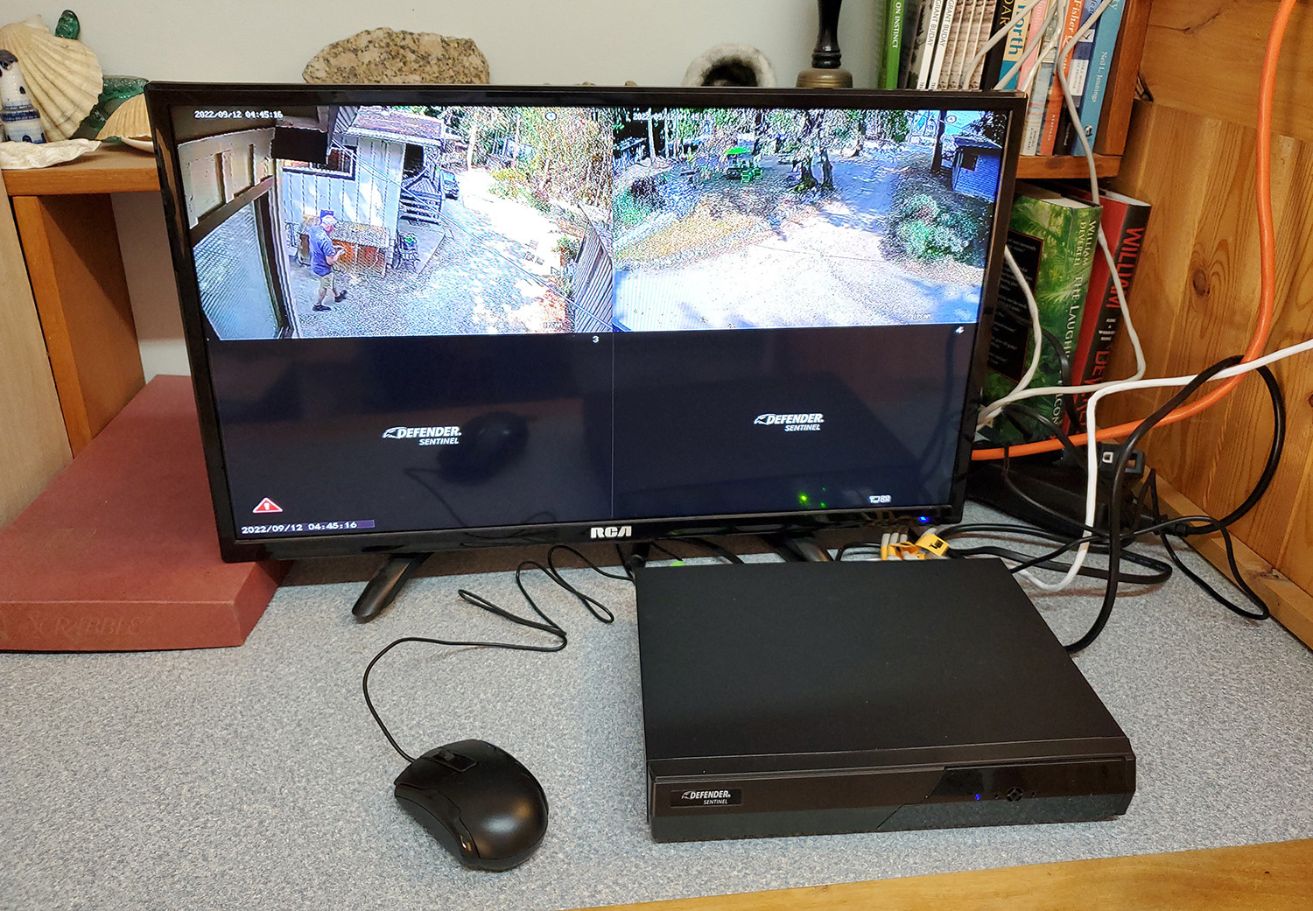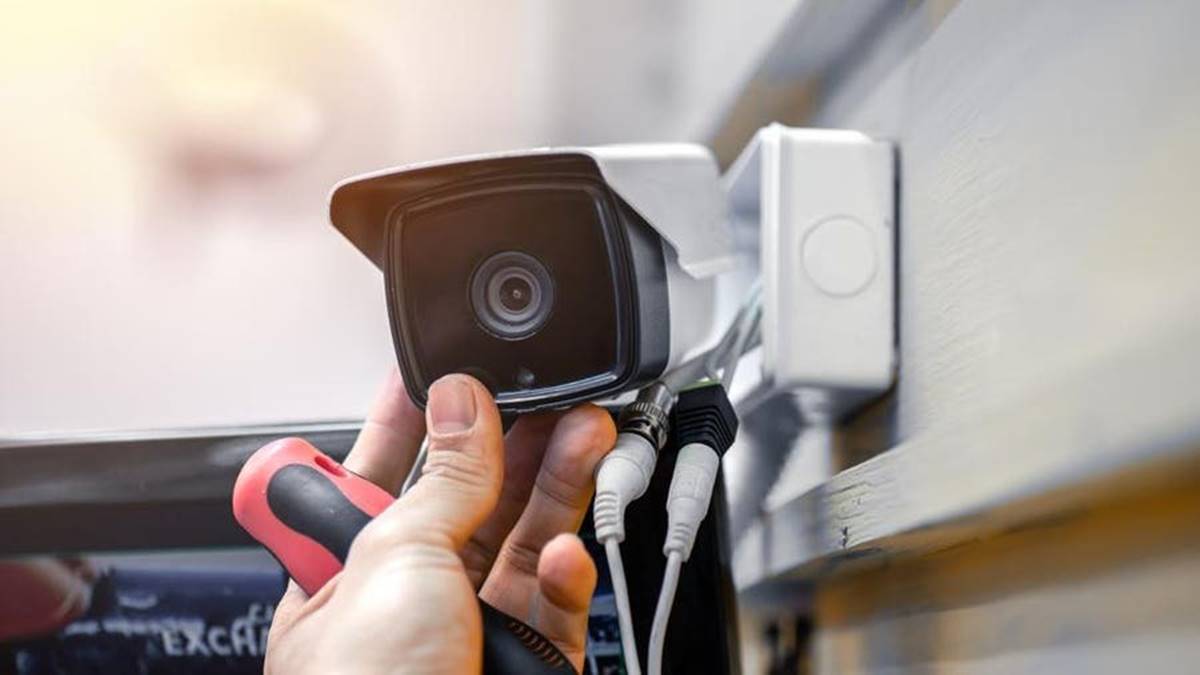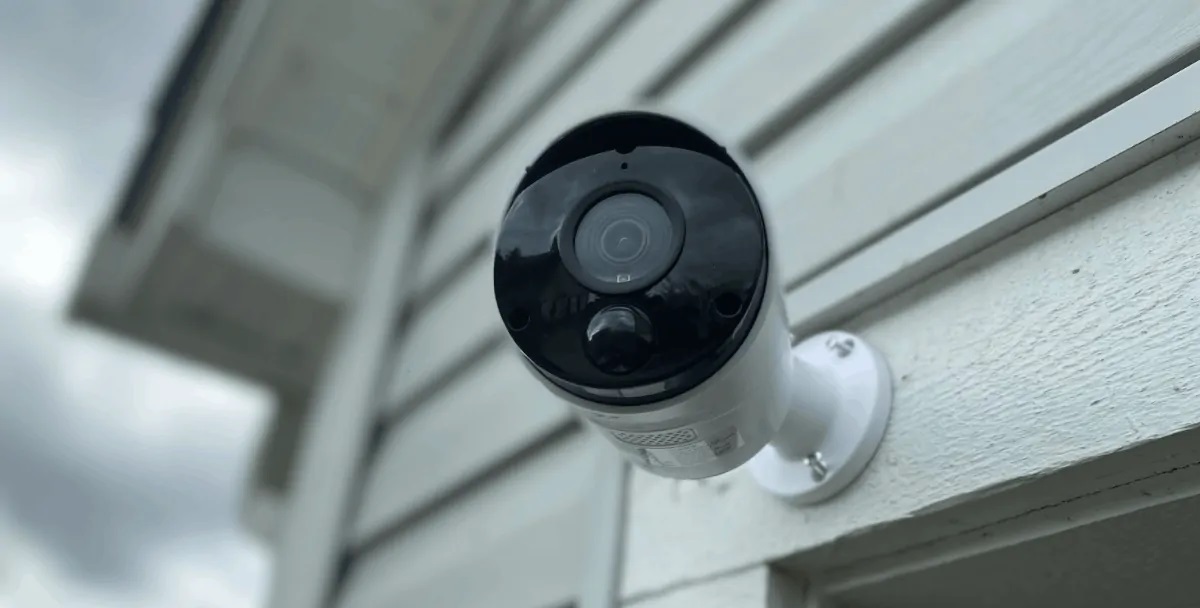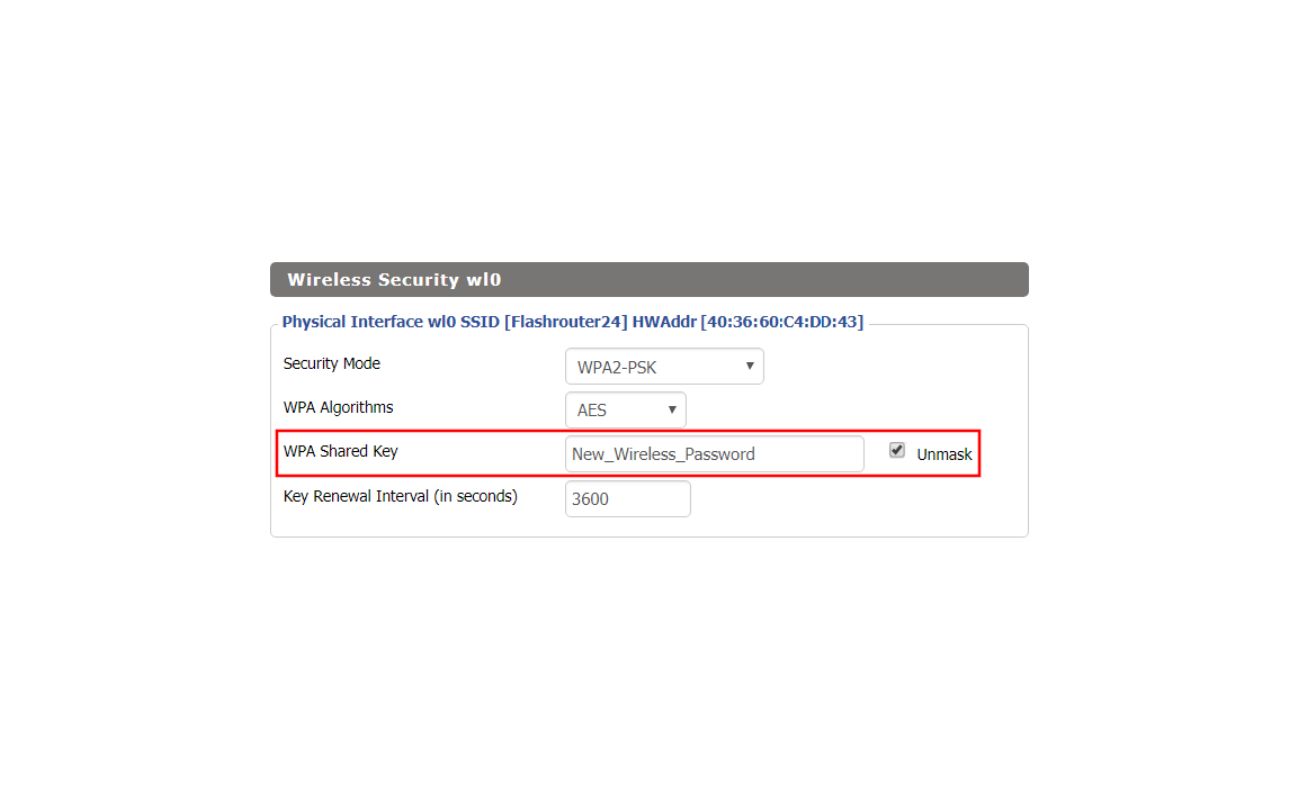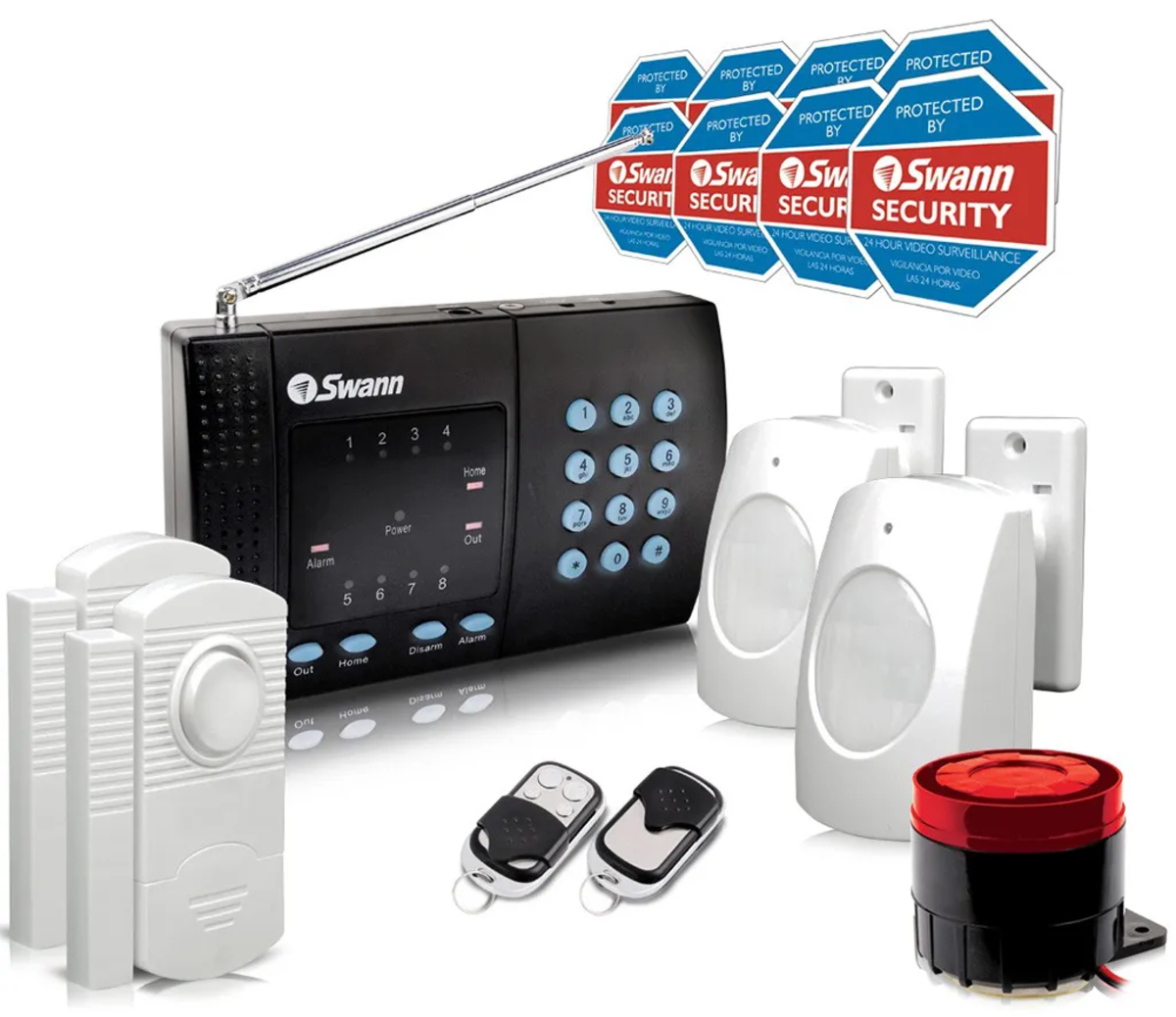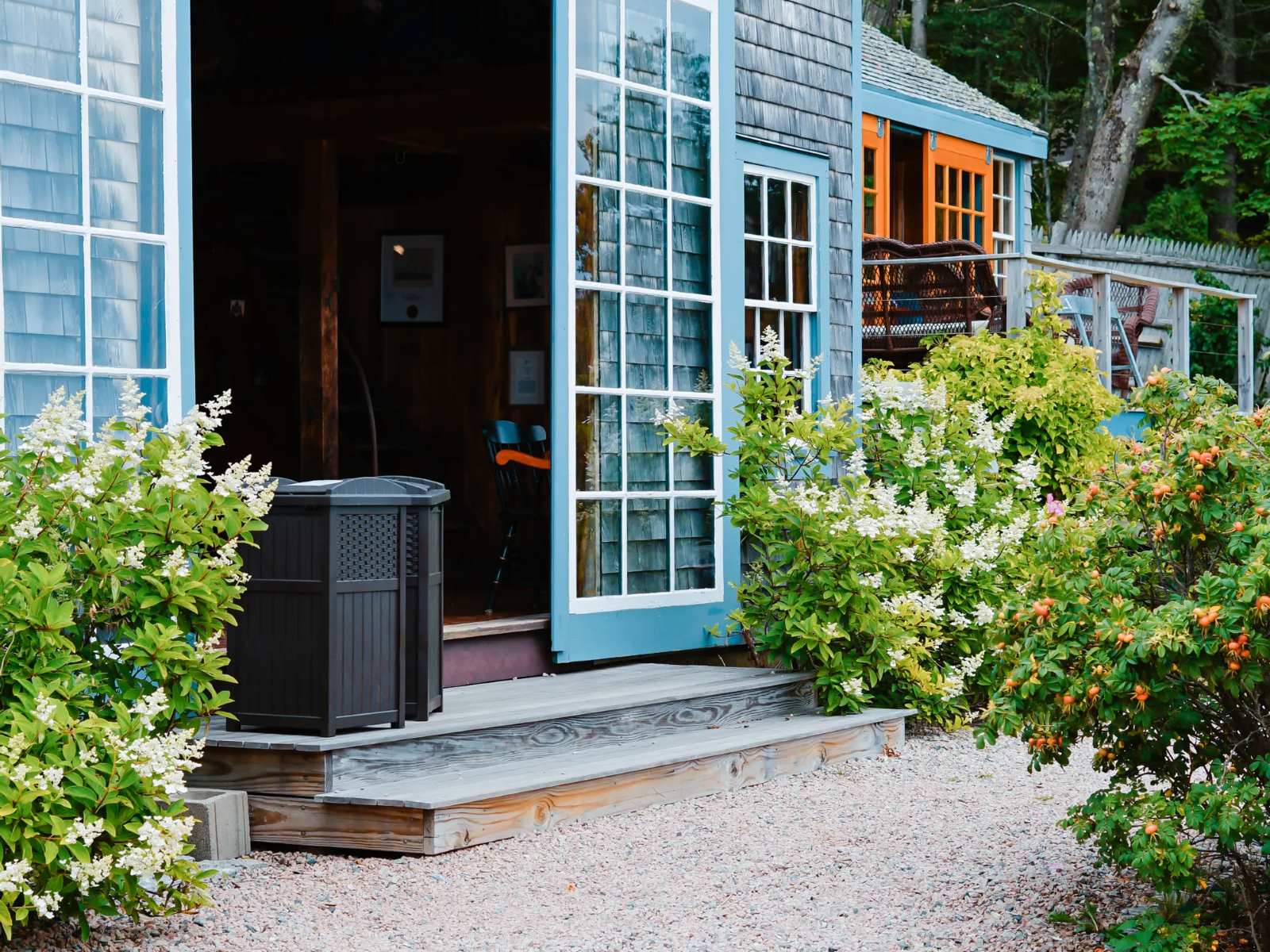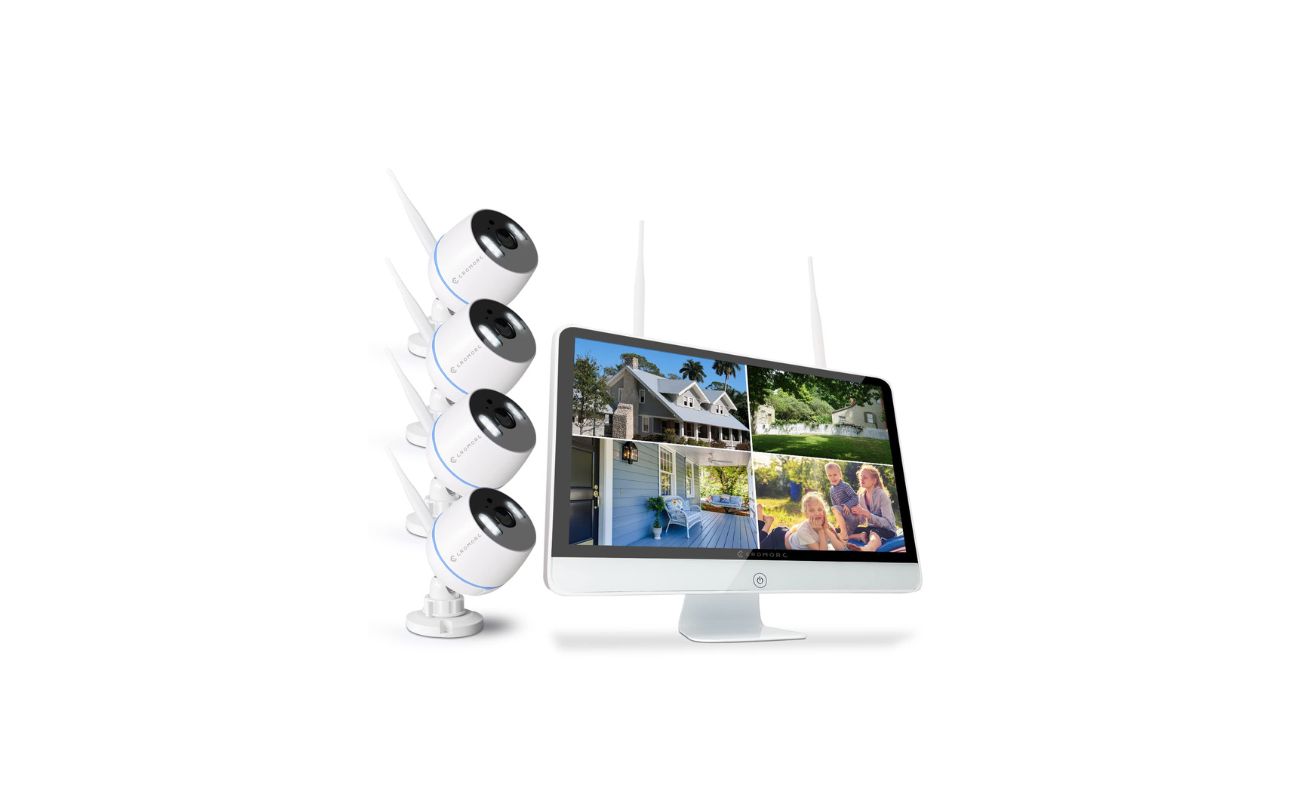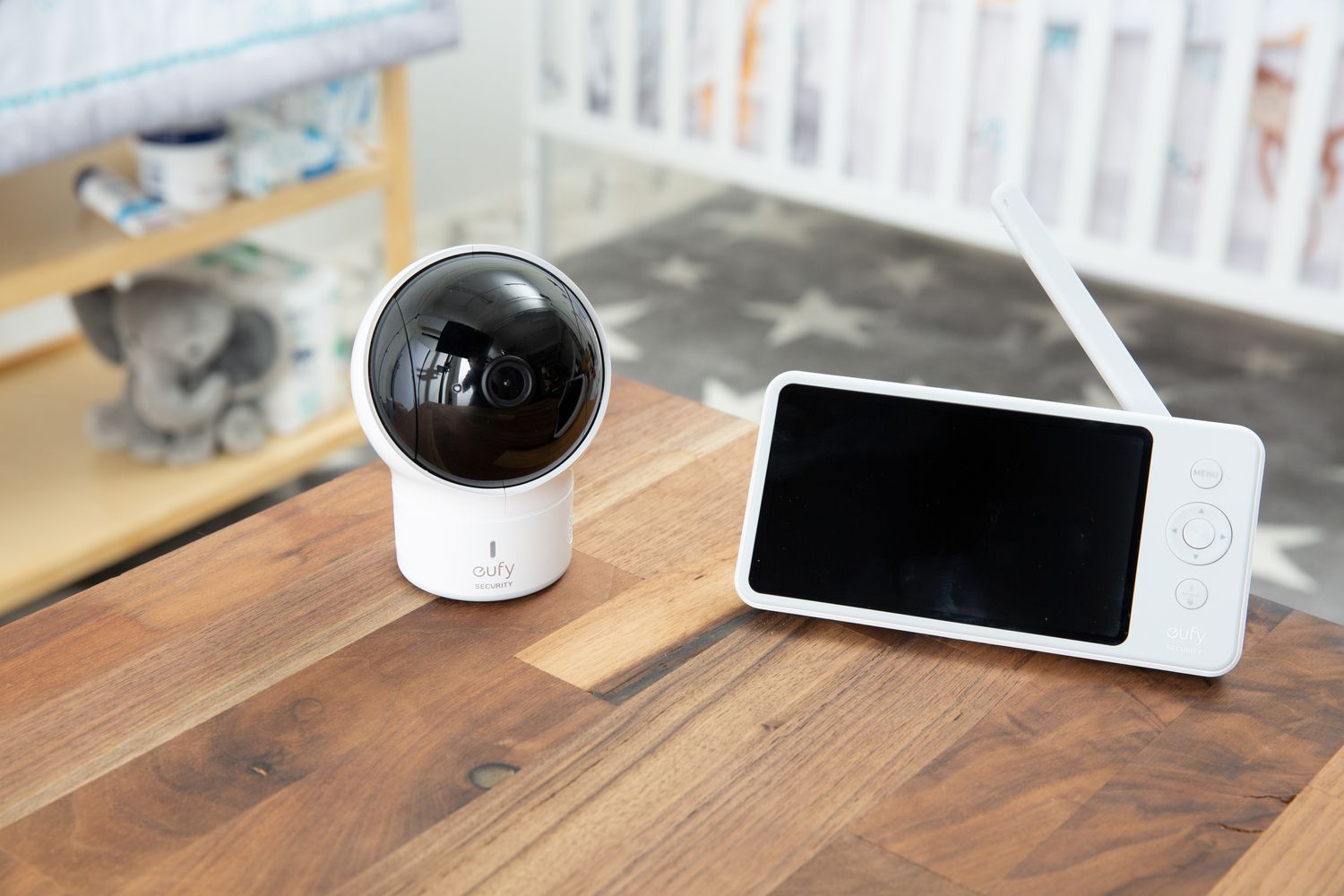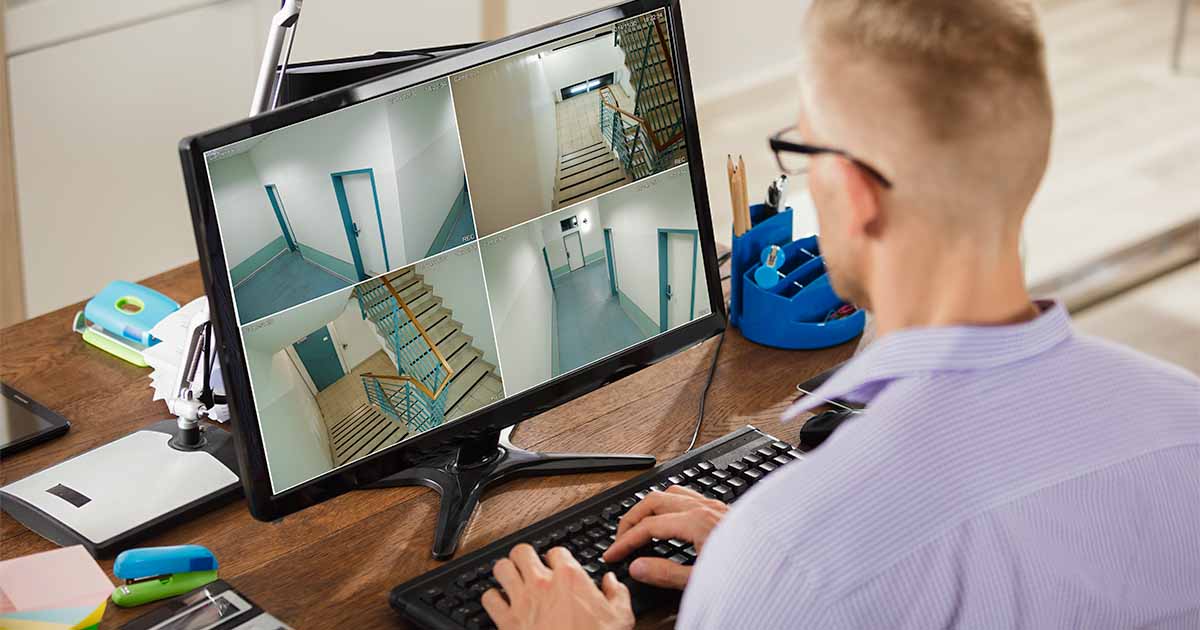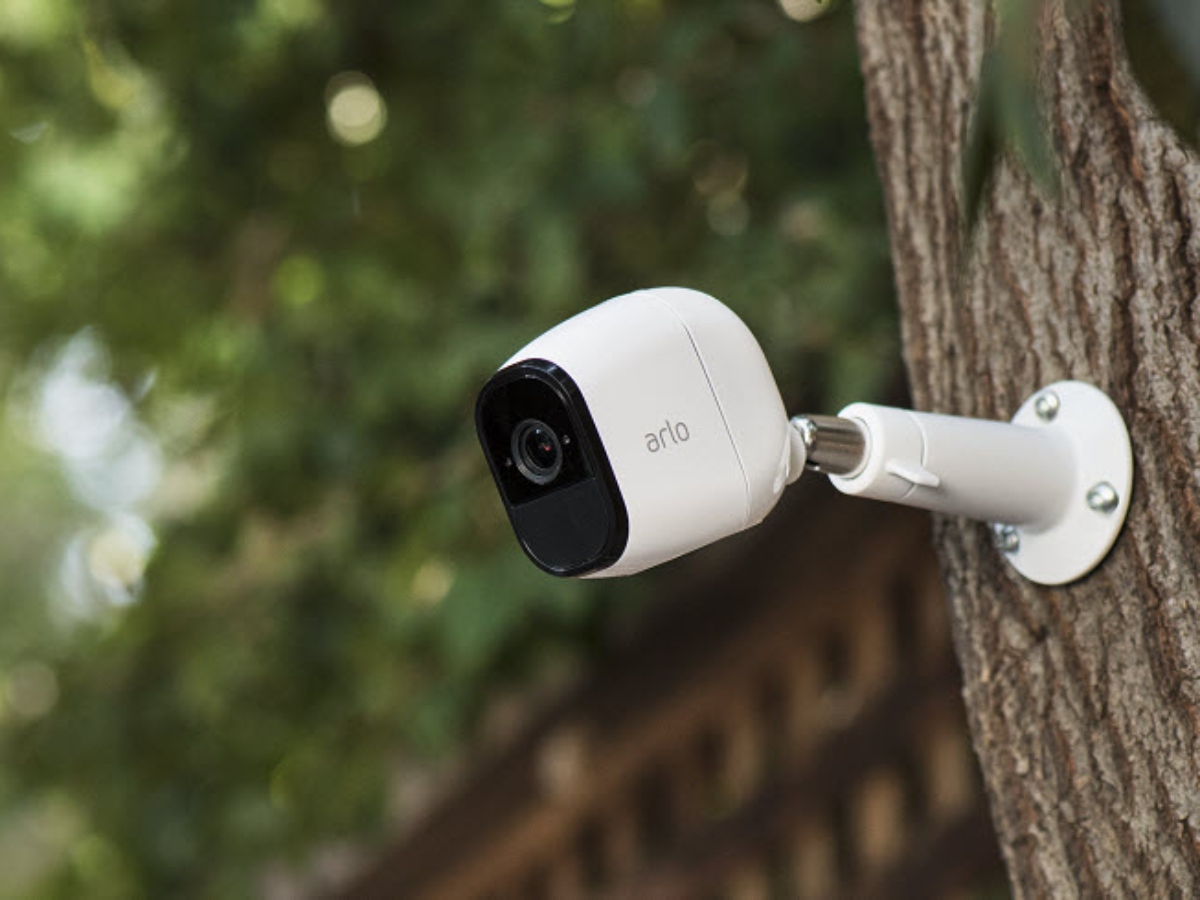Home>Home Security and Surveillance>How Can I Monitor Home Security Without A Contract?
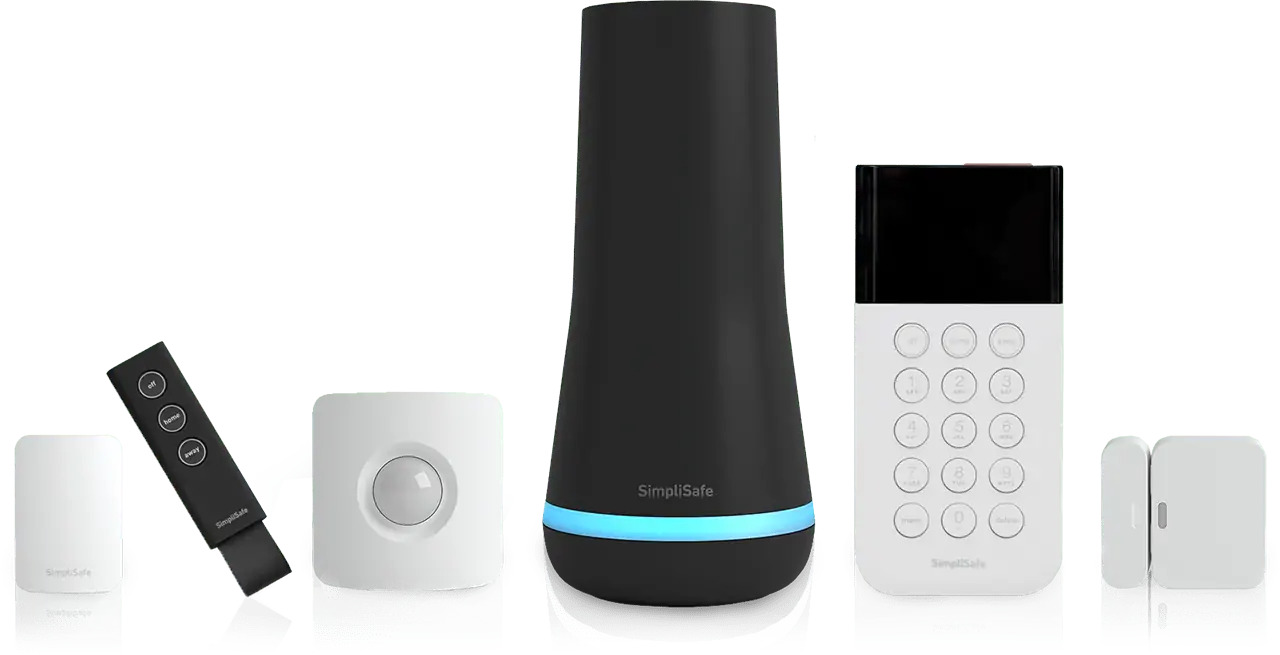

Home Security and Surveillance
How Can I Monitor Home Security Without A Contract?
Modified: August 27, 2024
Discover how to monitor your home security without a contract. Learn about cost-effective options for home security and surveillance without the hassle of long-term agreements.
(Many of the links in this article redirect to a specific reviewed product. Your purchase of these products through affiliate links helps to generate commission for Storables.com, at no extra cost. Learn more)
Introduction
When it comes to home security, peace of mind is invaluable. Knowing that your home is protected and monitored gives you a sense of security and allows you to relax and enjoy your time away from home. While many home security systems require signing a contract with a professional monitoring service, there are alternative options available that don’t require a contract commitment.
In this article, we will explore six different options for monitoring home security without a contract. Whether you prefer a DIY approach or want to take advantage of technology and community-based networks, there is a solution for everyone. Let’s dive in and explore these options in detail.
Key Takeaways:
- Takeaway 1: You can monitor your home security without a contract by using DIY systems, smart home devices, and video surveillance. These options give you control and flexibility to protect your home your way.
- Takeaway 2: Joining a neighborhood watch or peer-to-peer monitoring network can also enhance your home security. By working together with your community, you can create a safer living environment without being tied to a contract.
Read more: How Can I Start Home Security Monitoring
Option 1: Self-Monitoring Home Security Systems
Self-monitoring home security systems allow you to take control of your home security without the need for a contract. With this option, you are responsible for monitoring your own home and taking appropriate action when a security event occurs.
Self-monitoring systems typically consist of a combination of security devices such as motion sensors, door/window sensors, and security cameras. These devices are connected to a central hub or control panel that allows you to receive alerts and monitor your home’s security status.
One of the key benefits of self-monitoring is the ability to customize your security setup according to your specific needs. You can choose which devices to install, where to place them, and set up rules and notifications based on your preferences. For example, you can receive real-time alerts on your smartphone when a motion sensor is triggered or when a door or window is opened.
With self-monitoring, you have the flexibility to integrate your security system with other smart home devices. This allows for seamless automation and control over various aspects of your home, such as adjusting the thermostat, turning on/off lights, and locking doors remotely.
To enhance the effectiveness of a self-monitoring system, you can also opt to include features like remote access and video surveillance. Remote access allows you to control and monitor your security system from anywhere using a smartphone app or a web portal.
It’s important to note that while self-monitoring provides flexibility and cost savings compared to professional monitoring services, it does require a certain level of responsibility and vigilance on your part. You need to be proactive in monitoring alerts and responding promptly to potential security threats.
Overall, self-monitoring home security systems offer a great solution for homeowners who prefer to have control over their security setup without being tied into a contract.
Option 2: Peer-to-Peer Monitoring Networks
In recent years, peer-to-peer monitoring networks have emerged as an alternative to traditional home security monitoring. These networks leverage the power of community collaboration to enhance home security without the need for professional monitoring.
A peer-to-peer monitoring network operates by connecting homeowners in a particular community or neighborhood who are willing to monitor each other’s homes. This system works on the principle of reciprocity, where homeowners take turns monitoring their neighbors’ homes and reporting any suspicious activity.
There are several benefits to participating in a peer-to-peer monitoring network. First and foremost, it fosters a sense of camaraderie and community spirit. Neighbors who actively participate in monitoring each other’s homes form strong bonds and develop a mutual interest in ensuring the safety and security of their neighborhood.
Secondly, peer-to-peer monitoring networks are highly cost-effective. Since there is no need for professional monitoring services or elaborate security systems, homeowners can save significantly on monthly monitoring fees. They can pool their resources to invest in a shared network of security cameras and motion sensors for enhanced coverage.
When a suspicious event occurs, such as unauthorized entry or suspicious activity, the neighbor on duty can immediately contact the homeowner and alert them. This prompt communication allows homeowners to take appropriate action, such as notifying the authorities or checking on their property in person.
It’s important to note that peer-to-peer monitoring networks should have clear guidelines and protocols to ensure smooth operation. Participants should agree on boundaries and expectations, develop a schedule for monitoring duties, and establish effective communication channels.
While peer-to-peer monitoring networks may not have the same level of sophistication as professional monitoring services, they offer a practical and community-centric approach to home security. By working together, neighbors can create a strong network of surveillance and support, making their community safer for everyone.
Option 3: Utilizing Smart Home Devices and Apps
In the age of advancing technology, smart home devices and apps have revolutionized the way we approach home security. With a wide range of devices available, homeowners can now create a comprehensive security system without the need for a contract.
Smart home devices, such as smart locks, doorbell cameras, and motion sensors, can be seamlessly integrated into your existing home automation system. These devices are designed to communicate with each other and with your smartphone, providing you with real-time updates and notifications about the security status of your home.
One of the primary advantages of utilizing smart home devices is the convenience they offer. For example, smart locks allow you to remotely lock or unlock your doors, eliminating the need for physical keys and providing you with better control over access to your home. Doorbell cameras, on the other hand, enable you to see and communicate with visitors at your doorstep, even when you’re not at home.
In addition to convenience, smart home devices offer robust security features. Many devices come equipped with advanced technology, such as facial recognition, activity zones, and tamper detection, which enhance the overall security of your home. These features help to minimize false alarms and provide accurate information when a security event occurs.
To leverage the full potential of smart home security, homeowners can utilize dedicated security apps. These apps serve as a centralized hub, allowing you to monitor and control all of your smart home devices from a single interface. Through the app, you can receive real-time alerts, view live video feeds, and adjust settings according to your preferences.
It’s important to choose smart home devices and apps that are compatible with each other, ensuring seamless integration and smooth operation. Consider researching and selecting devices that are supported by widely used smart home platforms like Google Home or Amazon Alexa, as this will provide you with a wider range of options and flexibility.
Utilizing smart home devices and apps provides homeowners with a customizable and contract-free solution to home security. By taking advantage of the latest technological advancements, you can enhance the security of your home and have peace of mind knowing that you are in control.
Consider installing a DIY home security system with no contract. Look for systems with self-monitoring options, such as app notifications and remote access to cameras. This allows you to monitor your home without a long-term commitment.
Option 4: Video Surveillance Systems
Video surveillance systems have long been a staple in home security, and they continue to be a popular option for monitoring without a contract. With advancements in technology, video surveillance systems have become more accessible and affordable for homeowners.
A video surveillance system typically consists of one or more security cameras strategically placed around your property. These cameras capture video footage, which can be accessed and reviewed either in real-time or at a later time.
One of the key advantages of video surveillance systems is their deterrence factor. The presence of visible cameras acts as a deterrent to potential intruders, as they are less likely to target a home with a visible security system. Additionally, if an incident does occur, having video footage can assist law enforcement in identifying and apprehending the individuals involved.
Modern video surveillance systems offer a variety of features to enhance the effectiveness of monitoring. These include high-definition video quality, night vision capabilities, motion detection, and remote viewing options. Some systems also incorporate advanced analytics to detect suspicious behavior and trigger automated alerts.
When choosing a video surveillance system, it’s important to consider factors such as the camera resolution, storage capabilities, ease of installation, and compatibility with your existing devices. Additionally, ensure that the system you choose allows you to access the footage remotely, either through a mobile app or a web portal.
To maximize the effectiveness of your video surveillance system, it’s important to strategically place the cameras in areas of vulnerability, such as entry points and high-traffic areas. Take into account factors such as lighting conditions, potential obstructions, and the camera’s field of view when selecting their placement.
Whether you opt for a wired or wireless video surveillance system, make sure to regularly check and maintain your cameras to ensure they are functioning properly. Clear any obstructions that may hinder their view, clean the lenses, and update firmware as needed to keep your system running smoothly.
Video surveillance systems provide homeowners with a reliable and contract-free option for monitoring their homes. By investing in a quality system and strategically placing cameras, you can enhance the security of your home and have an additional layer of protection.
Option 5: Neighborhood Watch Programs
Neighborhood Watch Programs are community-based initiatives that encourage neighbors to work together to prevent crime and enhance home security. These programs rely on the collective efforts of residents to keep a watchful eye on their surroundings and report any suspicious activities to the authorities.
Participating in a Neighborhood Watch program can help create a sense of community and foster a safer living environment. By collaborating with your neighbors and sharing information, you can collectively deter criminals and improve the security of your homes.
The effectiveness of a Neighborhood Watch program lies in the active involvement of its participants. Here are some key steps to establish and maintain an effective program:
- Organize regular meetings: Hold regular meetings with your neighbors to discuss security concerns, share information, and develop strategies to keep your neighborhood safe.
- Establish communication channels: Create a system for sharing information quickly and efficiently, such as a group chat or email list. This allows neighbors to report suspicious activities and keep each other informed.
- Home security assessments: Conduct home security assessments, where neighbors can learn about potential vulnerabilities and share tips and recommendations for improving home security.
- Community training: Organize training sessions on topics such as crime prevention, recognizing suspicious behavior, and emergency preparedness. These sessions can be conducted by local law enforcement or other security experts.
- Visible signs and decals: Display Neighborhood Watch signs and decals in your community to deter potential criminals and make them aware that your neighborhood is actively vigilant.
- Collaborate with local law enforcement: Establish a strong partnership with your local law enforcement agency, and invite them to participate in meetings to address community concerns and provide guidance on crime prevention.
Neighborhood Watch programs are effective because they leverage the power of community involvement and rely on the collective efforts of residents. By acting as “extra eyes and ears” for law enforcement, neighborhoods can create a safer living environment and deter criminal activity.
Remember, the success of a Neighborhood Watch program depends on the commitment and active participation of its members. By working together and staying vigilant, you can make a significant impact on the security and overall well-being of your community.
Option 6: Utilizing Home Automation Services
Utilizing home automation services is another viable option for monitoring home security without a contract. Home automation allows you to automate and control various aspects of your home, including security, through a centralized system or smart hub.
With home automation, you can integrate security devices such as cameras, motion sensors, and door/window sensors into a unified system. This system can be controlled and monitored remotely using your smartphone or other connected devices.
One of the key benefits of home automation services is the ability to create customized routines and rules. For example, you can set your system to automatically arm the security system, lock doors, and turn off lights when you leave the house. Similarly, you can program your system to activate specific security measures, such as sending you alerts or triggering an alarm, when a sensor detects motion or a door is opened.
By integrating your security devices with home automation services, you can also create a more robust security ecosystem. For instance, you can sync your security cameras with other smart devices, such as lights and sirens, to enhance deterrence and response capabilities in case of a security breach.
Another advantage of utilizing home automation services is the ability to monitor and control your home remotely. Whether you’re at work, on vacation, or simply away from home, you can access your security system through a mobile app or web portal. This allows you to check camera feeds, receive real-time alerts, and even control your security system remotely.
When choosing a home automation service provider, consider factors such as the compatibility of their platform with your existing devices, the ease of use, and the availability of customer support. It’s important to select a reputable and reliable provider to ensure the security and functionality of your home automation system.
Overall, utilizing home automation services provides homeowners with a flexible and contract-free approach to home security. By automating and integrating security devices into a unified system, you can enhance the protection of your home and have greater control over your security measures.
Conclusion
When it comes to home security, there are numerous options available that allow you to monitor your home without the need for a contract. Whether you prefer a DIY approach, community-based solutions, or leveraging the power of technology, there is a solution to fit your needs.
Self-monitoring home security systems provide you with the flexibility to customize your security setup and take control of monitoring your own home. With the advancements in smart home devices and apps, you can utilize a wide range of interconnected devices to enhance your home security. Peer-to-peer monitoring networks and neighborhood watch programs foster a sense of community and collaboration, allowing neighbors to watch out for each other.
Video surveillance systems offer a tangible deterrent to potential intruders and provide you with video evidence in case of any security incidents. And by utilizing home automation services, you can automate and integrate your security devices, allowing for remote access and control of your home security.
It’s important to consider your specific needs and preferences when choosing the right option for monitoring home security without a contract. Consider factors such as cost, convenience, flexibility, and the level of involvement you desire.
Remember, while these alternatives may not provide the same level of professional monitoring as contract-based services, they offer customizable solutions that give you greater control over your home security. By choosing the right option and implementing it effectively, you can enjoy peace of mind knowing that your home is protected with a monitoring approach that suits your lifestyle.
Whether you opt for self-monitoring, community-driven solutions, or the integration of smart home devices and automation, taking proactive steps to monitor your home security without a contract can provide you with the reassurance and peace of mind you deserve.
Frequently Asked Questions about How Can I Monitor Home Security Without A Contract?
Was this page helpful?
At Storables.com, we guarantee accurate and reliable information. Our content, validated by Expert Board Contributors, is crafted following stringent Editorial Policies. We're committed to providing you with well-researched, expert-backed insights for all your informational needs.
